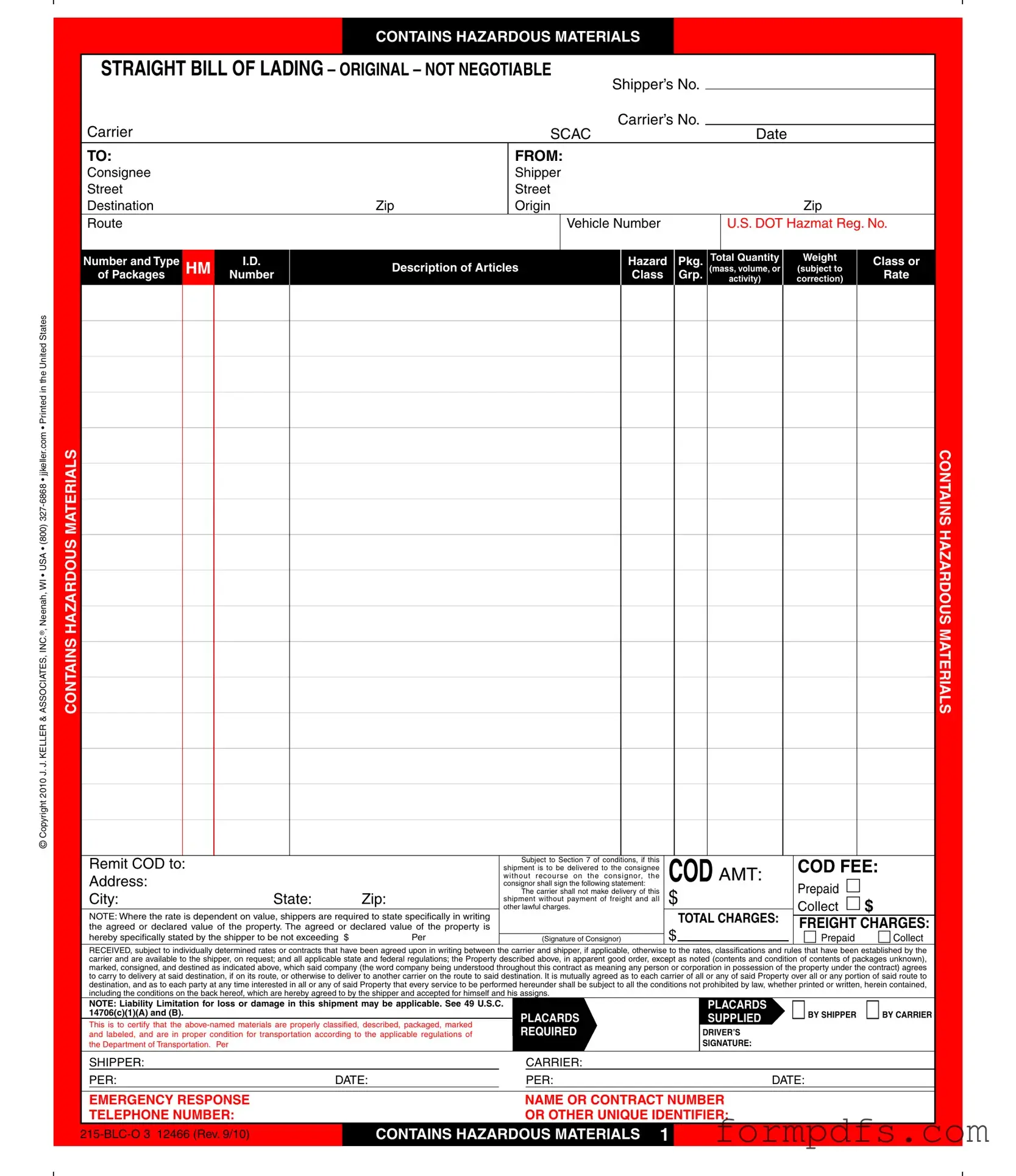What is a Hazard Bill of Lading?
The Hazard Bill of Lading is a document used in the transportation of hazardous materials. It serves as a receipt for the goods being shipped and outlines the terms and conditions under which the carrier agrees to transport these materials. This form is crucial for ensuring that all parties involved are aware of the nature of the materials being handled and comply with safety regulations.
Who needs to use a Hazard Bill of Lading?
Any business or individual shipping hazardous materials must use a Hazard Bill of Lading. This includes manufacturers, distributors, and anyone involved in the transport of dangerous goods. By using this form, shippers ensure compliance with federal and state regulations regarding hazardous materials.
What information is required on the form?
The Hazard Bill of Lading requires several key pieces of information, including the shipper's and consignee's names and addresses, a description of the hazardous materials, the total quantity, and the weight of the shipment. It also includes details about the carrier and any applicable freight charges. Accurate information is essential to ensure safe transport and compliance with regulations.
What are the consequences of not using this form?
Failure to use a Hazard Bill of Lading when shipping hazardous materials can lead to serious consequences. This includes legal penalties, fines, and potential liability for any accidents or incidents that occur during transport. Additionally, carriers may refuse to transport goods that are not accompanied by the appropriate documentation.
How does the liability limitation work?
The liability limitation outlined in the Hazard Bill of Lading specifies that the carrier is only responsible for losses or damages up to a certain amount. This amount is usually based on the declared value of the goods. If the shipper does not declare a value, the carrier's liability may be further limited. Understanding this limitation is vital for shippers to protect their interests.
What should I do if my shipment is damaged or lost?
If a shipment is damaged or lost, the shipper must file a claim with the carrier in writing within nine months of delivery or the expected delivery date. This claim should include details of the shipment and the nature of the damage. Timely filing is crucial, as failure to do so can result in losing the right to compensation.
Can I modify the terms of the Hazard Bill of Lading?
Modifying the terms of the Hazard Bill of Lading is possible, but it typically requires mutual agreement between the shipper and the carrier. Any changes should be documented in writing to ensure that all parties are aware of the new terms. It’s essential to keep a record of any modifications for future reference.
What happens if the consignee refuses the shipment?
If the consignee refuses the shipment, the carrier may store the goods at the owner's expense or sell them at public auction after notifying the shipper. The carrier has the right to take necessary actions to protect their interests, including charging for storage or handling costs. It's important for shippers to communicate with consignees to avoid such situations.
